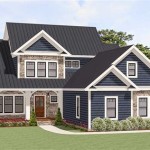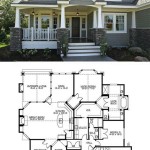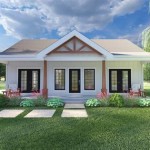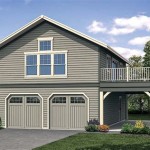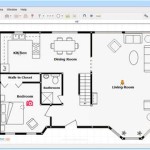4 Bedroom Beach House Plans: Designing the Ideal Coastal Retreat
The allure of a beach house, a sanctuary where the rhythm of the waves sets the pace of life, is undeniable. For families seeking a spacious coastal escape, 4-bedroom beach house plans offer the perfect blend of comfort, functionality, and aesthetic appeal. These plans cater to various lifestyles, from those desiring a permanent residence with breathtaking ocean views to those wanting a vacation home for multi-generational gatherings. This article explores key considerations and design elements crucial to creating an exceptional 4-bedroom beach house that maximizes the coastal living experience.
Selecting the right blueprint is paramount, and a considerable amount of time should be spent assessing needs and wishes. Considerations should go beyond the simple number of bedrooms and bathrooms. Thought should be given the specific design elements that allow the home to integrate seamlessly with its surroundings while providing the necessary protection from the elements that a coastal environment provides.
Understanding Site-Specific Design Considerations
Building on or near the coast requires careful assessment of the environment. Before even considering floor plans, a thorough site analysis is essential. Factors such as prevailing winds, sun exposure, flood zones, soil conditions, and local building codes will significantly influence the design. Wind resistance is a particularly critical factor, as coastal areas often experience strong winds and storms. The architectural style, structural materials, and window placement should be selected to withstand these forces.
Elevation is another critical factor, particularly in areas prone to flooding. Raising the structure on pilings or stilts not only mitigates flood risk but also allows for improved airflow beneath the house, helping to prevent moisture buildup and potential damage. Coastal building codes often mandate specific elevation requirements, which must be strictly adhered to.
Sun exposure also deserves attention. Orienting the house to maximize natural light while minimizing excessive heat gain is crucial for energy efficiency. Overhangs and strategically placed windows can help to control solar heat gain, reducing the need for excessive air conditioning. Natural landscaping also should be considered with native plant options being chosen.
Soil conditions in coastal areas can be challenging, often consisting of sand or unstable ground. This may necessitate specialized foundation designs, such as deep pilings or reinforced concrete slabs, to ensure the structural integrity of the house. Geotechnical investigations are often required to assess soil stability and determine the appropriate foundation system.
Finally, local building codes must be thoroughly researched and understood. These codes often dictate specific requirements for coastal construction, including wind resistance, flood protection, and environmental protection measures. Compliance with these codes is essential for obtaining building permits and ensuring the long-term safety and stability of the house.
Key Interior Design Elements for Coastal Living
The interior design of a 4-bedroom beach house should reflect the relaxed and airy atmosphere of the coastal environment. The design should contribute to a seamless connection between indoor and outdoor spaces, inviting the beauty of the ocean into the home.
Open floor plans are ideally suited for beach houses, encouraging natural flow and maximizing views. A combined living, dining, and kitchen area creates a central gathering space for family and friends. Large windows and sliding glass doors offer unobstructed views of the ocean and provide access to decks or patios. Ample natural light enhances the sense of spaciousness and brings the outdoors in.
Material selection is also vital. Durable and low-maintenance materials are recommended, given the potential for saltwater exposure and sandy feet. Hardwood floors, tile, or vinyl plank flooring are popular choices, as they are easy to clean and resistant to moisture damage. Neutral color palettes, inspired by the colors of the sand, sea, and sky, create a calming and inviting atmosphere. Accents of blue, green, and coral can add pops of color.
Furnishings should be comfortable and functional, with an emphasis on relaxed living. Oversized sofas, plush chairs, and durable outdoor furniture create inviting spaces for relaxation and socializing. Natural fabrics, such as linen and cotton, are breathable and comfortable in warm weather. Storage solutions are also essential, particularly for managing beach gear and outdoor equipment.
The four bedrooms should ideally offer a degree of privacy while maintaining the overall coastal theme. Master suites often incorporate private balconies or patios with ocean views. Guest bedrooms should be designed to comfortably accommodate visitors, with ample closet space and comfortable furnishings. En-suite bathrooms are a desirable feature, providing added convenience and privacy.
Incorporating nautical elements, such as rope details, driftwood accents, and sea-themed artwork, can enhance the coastal ambiance. However, it is important to avoid being overly thematic, as this can make the space feel contrived. The goal is to create a subtle and sophisticated coastal aesthetic that reflects the natural beauty of the surroundings.
Technology integration is also an important consideration. Smart home systems can provide enhanced comfort, security, and energy efficiency. Features such as automated lighting, temperature control, and security cameras can be controlled remotely, providing peace of mind when the house is unoccupied. High-speed internet access is also essential for staying connected and enjoying entertainment options.
Optimizing Outdoor Living Spaces
One of the greatest advantages of a beach house is the opportunity to enjoy the outdoors. Outdoor living spaces should be an integral part of the design, seamlessly connecting the interior of the house with the surrounding environment. Decks, patios, and balconies provide spaces for relaxing, dining, and entertaining.
A well-designed deck or patio should be large enough to accommodate outdoor furniture, such as tables, chairs, and lounge chairs. Built-in seating can maximize space and provide comfortable seating options. Outdoor kitchens and grilling areas are popular additions, allowing for outdoor cooking and dining experiences.
Shade is also an important consideration. Pergolas, awnings, or retractable shades can provide protection from the sun, making outdoor spaces more comfortable during the hottest parts of the day. Landscaping with native trees and shrubs can also provide shade and create a more natural environment.
Outdoor showers are a practical and desirable feature for beach houses. These allow residents and guests to rinse off sand and saltwater before entering the house, helping to keep the interior clean and tidy. Outdoor storage areas are also essential for storing beach chairs, umbrellas, and other outdoor equipment.
Considerations should also be given to the prevailing winds and potential for storms. Windbreaks, such as hedges or fences, can help to protect outdoor spaces from strong winds. Durable outdoor furniture that can withstand the elements is also essential. Drainage is also important to prevent water from pooling on decks and patios.
Lighting is also key for creating inviting outdoor spaces at night. String lights, lanterns, and spotlights can illuminate decks and patios, creating a warm and inviting atmosphere. Landscape lighting can highlight architectural features and create a dramatic effect. Motion-sensor lights can provide added security.
Finally, remember that the goal is to create a seamless transition between indoor and outdoor spaces. Large windows and sliding glass doors connect the interior of the house with the surrounding environment. Outdoor furniture that complements the interior design creates a cohesive look. The overall design should encourage residents and guests to spend as much time as possible enjoying the natural beauty of the coastal environment.
Furthermore, consider the practicality of adding features that support beach-related activities. A designated area for drying wetsuits and swimsuits, for example, can prevent moisture damage within the home. Outdoor storage for surfboards, kayaks, and other recreational equipment can also help to keep the house clutter-free.
The thoughtful integration of indoor and outdoor spaces, combined with practical features tailored to coastal living, will elevate the 4-bedroom beach house from a simple dwelling to a truly exceptional coastal retreat.
Ultimately, the success of a 4-bedroom beach house plan hinges on how well it integrates with its surroundings and meets the specific needs of its occupants. By carefully considering site-specific factors, incorporating key interior design elements, and optimizing outdoor living spaces, it is possible to create a coastal haven that offers unparalleled comfort, functionality, and aesthetic appeal.

Beach Style House Plan 4 Beds 5 Baths 2493 Sq Ft 443 17 Houseplans Com

House Plan 207 00008 Coastal 4 738 Square Feet Bedrooms 5 Bathrooms Beach Plans Florida Beautiful

4 Bed Beach House Plan With Home Office 735005car Architectural Designs Plans

Zen Beach 4 Bedroom House Plans New Zealand Ltd Floor Coastal

Build A Home On The Beach House Plans Blog Dreamhomesource Com

4 Bedroom Coastal House Plan With Pool 3276 Sq Ft 3 5 Bath

Beach House Plan With 4 Bedrooms And 3 5 Baths 8562

Beach Style House Plan 4 Beds 5 Baths 2240 Sq Ft 443 16 Houseplans Com

House Plan 5565 00014 Coastal 4 004 Square Feet Bedrooms 5 Bathrooms Plans Contemporary One Level

4 Bed Beach Home Plan With Office And Drive Under Garage 340020str Architectural Designs House Plans

